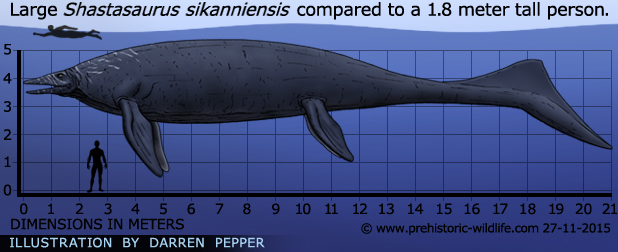I have referenced mountains a number of times when discussing Shastasaurus this week and that is not without purpose. Shastasaurus was, after all, named for Mount Shasta in California. Shasta is an active volcano in the Cascade Range and is absolutely enormous. The ichthyosaur is as well. Many large marine animals comparable to Shastasaurus are of similar morphology. The most notable character of this morphology is actually the lack of a character: the dorsal fin often shown in recreations of later ichthyosaurs is entirely lacking in Shastasaurus. Other morphological characters of Shastasaurus are expected, such as a hypocercal vertical tail and pelvic and pectoral fins. The skull of Shastasaurus is not completely known, and as such the cranial form is not entirely known either. Therefore the only characters we can discuss for certain are the tail and dorsal fin and the breadth of the ribcage of Shastasaurus. The ribcage is short and shallow, giving Shastasaurus a slender body profile. The toothless snout (mentioned before), slender profile, basal tail, and lack of dorsal fin show Shastasaurus to be a basic and primitive ichthyosaur. The size of the animal is interesting, however, as it is enormous and exceptionally long (up to 21 meters estimated) despite its shallow ribcage (approximately 2 meters deep by 7 meters long) and primitive features.


No comments:
Post a Comment